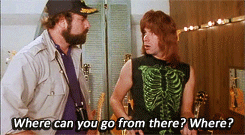Could make it perfect just by shaving some material off, it’s missing the appropriate gaps between E and F, and B and C
Came here just to note this. So close!
I was just going to say “That’s not right.”
You were so much kinder and more helpful. Which is why you’re you and I’m me.
Yeah but it would make the job much more complicated as very few would know and care about it to do it right.
- C
- C#
- D
- D#
- E
- E𝄲
- F
- F#
- G
- G#
- A
- A#
- B
- B𝄲
- C
- C#
- D
- Mystery note
- C
- C#
- …
Amazing that you can tell. They all look the same to me.
Lol their joke is that the layout doesn’t actually match a piano. Normally there are seven white keys and five black keys. So E# isn’t a thing, that’s just F. And B# isn’t a thing, that’s C.
Makes me wonder why they even bothered to have 7 different notes instead of 6, with B# and E# as valid notation.
First, you don’t have to, it’s a useful convention.
Since the middle ages, the west has used a seven note scale with five whole steps and two half steps. This gives one scale, c major, with seven natural (neither flat nor sharp) notes.As an aside, I believe there are six note scales.
There are 12 notes in most Western music. When you double a frequency you go up an octave, but keep the same note.
Music is played in different “keys” though with 7-note scales, with letters assigned A-G. If you play the notes in order starting and ending at the letter for which the scale is named, then do the same for a different scale, the relationship between the notes will sound the same between the 2 scales, but your starting and ending pitch will be different.
Piano keys are arranged with all 12 notes being available, but arranged in the key of C-major or A-minor, where all notes are natural notes (no sharps or flats).
If you play just the white keys starting from C, you’ll be playing a C-major scale : C, D, E, F, G, A, and B. However, to play the F-major scale, you’re going to need to skip one white key and hit a black key: (F, G, A, Bb, C, D, and E). No letter repeats on a scale.
A sharp (#) or flat (b) note is just moving the smallest step you can to the right or left, respectively. For most notes, that’s moving to a black key, but there’s no black key between B and C or E and F sometimes it’s moving to another white key.
Why don’t we just ignore weird notes like Cb? Because every letter needs to be represented on a scale. Ab-minor, for instance has Ab, Bb, Cb, Db, Eb, Fb, and Gb. So even though Cb is the same frequency as B-natural, it serves the same role in the scale as E does in the key of C, and if you didn’t represent it as a flat note, your scale would have 2 "B"s and no “C.”
This gets even more important when you get into different instruments with different natural keys. A Piano, flute, bassoon, and other instruments are what we call “Concert C” instruments, which means they have the same natural key of C. However, other instruments are different.
A standard clarinet is a Bb instrument, meaning its Bb scale matches the C scale of a piano. You also have Eb-clarinets that are a little smaller, meaning that if they play a “C” they’ll be playing a concert Eb, which uses the same fingerings as a Concert Bb from a standard clarinet.
So when an Orchestra is playing something in the key of A-major (A, B, C#, D, E, F#, G#), an Eb-clarinet is playing in F#-major (F#, G#, A#, B, C#, D#, E#).
wow. I just learned more in 5 mins than in years of music lessons. thx
It’s astonishingly obvious once it’s pointed out:

There’s no B#/Cb and no E#/Fb, so the groups of two black notes are between C and E, and the groups of three are between F and B.
Jacob Collier ahh piano
Blue note support!
Westminster bridge also makes shadows. https://i2-prod.mylondon.news/incoming/article18813054.ece/ALTERNATES/s1200b/0_Shadow_on_Westminster_Bridge-1.jpg
they knew
The layout differing from a typical piano bugs me though.
I think we are looking at one of them new fangled microtonal keyboards. The white keys are your standard 12 TET notes (C, C#, D, D#, etc.) and the black keys are your half sharps / half flats.
Slaps roof you could fit so much math music in this bad boy.
The piano for when dodecaphony doesn’t subvert tonality nearly enough.
Now play chopsticks like Tom Hanks in Big.
Put some motion sensors on that thing and rig it so I can play chopsticks with my feet.
And then add a light so cats can scare the shit out of passersby with eerie dissonance in the dead of night.
Is that baked enamel?






